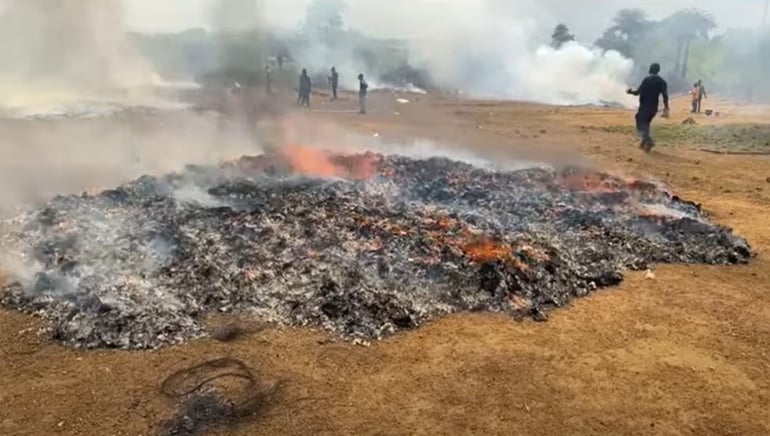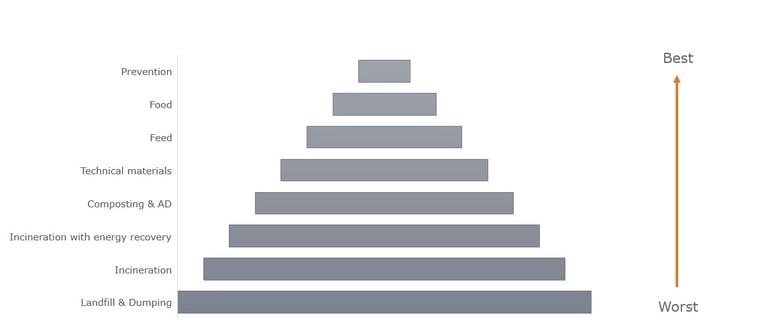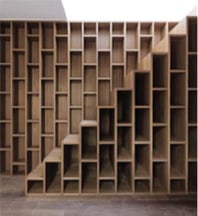
The shredded banknote recycling process is often arranged depending on the volume of the banknotes, if these are shredded centrally or decentrally, the maturity level of local recycling markets and last but not least important the wide variety of notes in substrates, inks and security features.
The re-use of shredded and briquetted banknotes, continues to be done worldwide in various ways. There isn’t an overall policy or solution what to do with these shredded banknotes, each country has a different approach. That also depends on circumstances, costs and options as well as which type of banknotes you have, for example polymer, cotton or hybrid banknotes or a mix of these.
During the Global Currency Forum in Spain earlier this year, Jeroen Kusters, Director of Sales at Royal Dutch Kusters Engineering, explained the various ways of re-using banknotes where some of them were highlighted. But before we start explaining some of these methods we first give you an explanation of how a circular economy should look like.
Overview of content
What does a circular economy mean?
New technology development for recycling shredded banknotes
What does a circular economy mean?
A circular economy is a model of production and consumption, where existing materials and products are shared, rented, re-used, repaired, refurbished and recycled for as long as possible to create more value. In this way, the life cycle of products is extended. It means that the loops are closed in which raw materials, components and products lose their value as little as possible and renewable energy sources are used. In a real circular economy there is no waste and raw materials are being used over and over again. A linear economy is based on a take-make-dispose model.
.jpg?width=1024&name=English-PBL-Linear-VS-Circular-1024x529%20(1).jpg)
Figure 1: re-use of raw materials in a circular economy (PBL, 2019a).
The circular economy for banknotes can be found in some of the steps in the waste recovery pyramid you see below. The first five steps in the waste recovery pyramid are used for shredded banknotes. Feed, food and prevention is not applicable for shredded banknotes. Of course the first one hasn't got any effort for a circular economy. Landfill & dumping just means that the shredded banknotes are buried or dumped somewhere and aren't re-used in any kind of way. The second and third step is burning the shredded banknotes. If there is a chance to incinerate them with energy recovery into fabrics then the shredded banknotes already deliver much more value than just burning them without any energy recovery of course.

The Bank of England already has experience with several steps in the waste recovery pyramid. Until 1990 their banknotes were burned and the heat was captured to warm up the Bank of England. In the early 90's they moved up from this method because it was not as environmental friendly as expected and also not efficient. So in the early 2000's they started to experiment to recycle the old bank notes by composting them. The latest huge operation was in in 2020 to recycle all their £ 20 cotton banknotes and recycle them to be used as a soil improver for the agriculture. It was the biggest cash replacement in UK history. In 2016 the Bank of England started with the polymer banknotes. One of the reasons they moved to polymer is because of the life cycle of these polymer notes, they last around 2,5 times longer than paper banknotes. If you want to read more about the life cycle of banknotes click the life cycle of banknotes click here. Polymer banknotes cannot be composted like the cotton ones can so these polymer banknotes are returned for destruction and turned into pellets. To recycle the polymer banknote shreds, they are often mixed with other plastics and then can be heated and pelletized at high temperatures. Subsequently, the pellets can be put in moulding to make low quality recycled plastic items. So these pellets can be transformed into new plastic items.
Of course it's a challenge to destroy and recycle banknotes that are different from each other. Often there are banknotes in circulation and used of different materials like cotton and polymer. But with some minor adjustments these can be handled also in a secure way. Want to read more about this topic then read this blog. ![]()
The practice has proven that cotton banknote shreds as well as polymer banknotes can be recycled. Cotton banknotes could be a source to produce board panel which can be used in many ways for example in signage, interior design and store displays. See below an example. Currently Kusters is collaborating with a partner and examining the use of cotton banknotes in high value panels.

Also the high quality polymer used in banknotes can be recycled like we mentioned already before. In general this highly qualified substrate is often mixed with other plastics and ends up as plastic from a lower quality. Some example of high quality products made from these recycled banknotes are durable design furniture. The goal of Kusters is to eventually offer complete durable solutions made out of 100% polymer banknote shreds that can eventually also be re-cycled again.


Hybrid banknotes and the recycling process
Hybrid banknotes contain both substances so polymer and also cotton. Therefore it's more difficult to recycle these. Steam autoclaving could be a solution for this. Hughes Energy is developing a solution which was presented at the Banknote and Currency Conference 2022 in Washington DC. More info on this can be obtained through Kusters.
Substrate should not be mixed to allow for circular recycling
One of the main reasons -besides the acclaimed longer lifetime- for countries to switch to polymer banknotes is their recyclability. Of course, cotton banknotes can be briquetted to reduce dust and transport volume, saving both costs and reducing impact to the environment. Traditional solutions are already available for recycling these cotton briquettes. However, briquetting is not possible for polymer banknotes due to the fact that it will melt. Mixed (small) amounts of polymer with cotton is not recommended as it will contaminate the clean waste stream, which will not be practical for high level or circular recycling solutions.
More and more countries have multiple substrates in circulation, a clean separation of these various substrate shreds is essential. New initiatives have started by Kusters so durable and sustainable products can be made for both types of banknotes if collected separately without cross contamination.
What does the ideal future look like?
.jpg?width=301&name=circle%20of%20banknotes%20ESY-041834420%20(2).jpg)
Currently 75% of the central banks dispose their banknotes in landfill or incineration. That was an outcome of a survey held by Banknote Industry news recently. Hopefully one day we can roll out the circular economy with regard to banknotes, whatever type of banknotes are used. Hopefully one day we will be able to claim that shredded banknotes have become part of a circle with no loose ends, a real circular economy.
The ambition of Royal Dutch Kusters Engineering is to bring the industry together to contribute to a more sustainable cash cycle, in which the secure destruction and re-using is an essential part.
Discover our currency destruction solutions
Royal Dutch Kusters Engineering is the world's leading manufacturer of currency destruction equipment. We design, develop, deliver, install and service reliable and secure destruction solutions for all types of banknotes.
If you want to know more about our upgrade solutions to handle polymer banknotes, please download our leaflet: 'From cotton to polymer'.
You can also request a free consult with our specialists to discuss the possibilities for re-using shredded banknotes.
Keep informed on the latest insights and subscribe to our blog.

